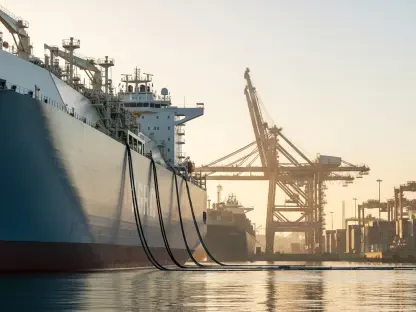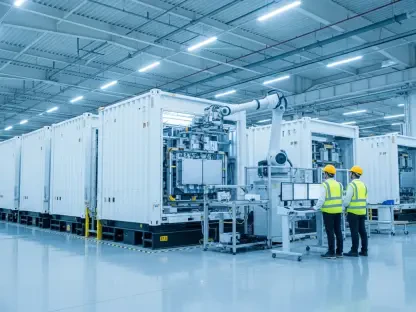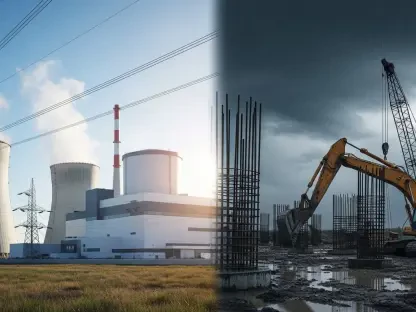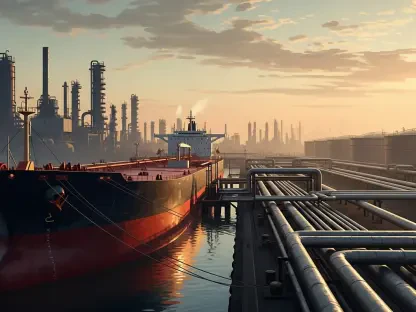The importance of hydropower in the renewable energy landscape cannot be overstated. Hydropower has been a steadfast source of clean energy for over a century, accounting for nearly 27% of renewable energy production in the United States. As the nation strives for ambitious clean energy goals, maintaining and expanding the hydropower supply chain is crucial. However, significant gaps exist within this supply chain, posing challenges to its robustness and efficiency.
The Role of Hydropower in Renewable Energy
Hydropower stands as one of the oldest and most reliable renewable energy sources. Despite the growth of solar and wind energy, hydropower remains indispensable due to its ability to provide consistent and scalable power. Unlike intermittent renewable sources, hydropower can supply baseload power, making it a critical component of a balanced energy mix. This reliability, combined with advancements in technology, underscores the need to ensure a strong and effective supply chain for hydropower infrastructure.
Throughout its history, hydropower has played a vital role in the U.S. energy landscape, supporting both economic growth and environmental sustainability. The extensive network of dams and hydroelectric units across the country highlights its longstanding and continued relevance. Modernizing these systems and integrating innovative technologies can further enhance their efficiency and sustainability. Nonetheless, the hydropower industry’s potential is hindered by substantial and complex supply chain challenges that need to be addressed urgently.
Identifying the Supply Chain Gaps
The report from the National Renewable Energy Laboratory (NREL) and the Department of Energy (DOE) identifies five key gaps within the domestic hydropower supply chain. Unpredictable demand signals are a primary issue, as the long lifespan of hydropower systems, typically 30-50 years, results in sporadic demand for replacements and refurbishments. This variability makes it challenging for suppliers to plan production and resource allocation efficiently.
Limited domestic suppliers compound the problem, with few producers in the U.S. capable of manufacturing vital materials and components, which leads to dependencies on foreign suppliers. Federal contracting and procurement regulations further complicate the supply chain landscape. Existing rules can delay projects and create inefficiencies, stalling the progress of essential upgrades and new installations.
Foreign competition also plays a significant role in the challenges faced by the domestic hydropower supply chain. Foreign companies often benefit from subsidies that allow them to offer products at lower prices, creating inequitable competition that pressures U.S. suppliers. Additionally, a skilled workforce shortage exacerbates these issues. Over recent decades, the shift of hydropower manufacturing overseas has led to a dwindling talent pool within the country, with experienced professionals retiring and fewer new entrants into the field.
Enhancing Demand Signals Through Federal Fleet Initiatives
One of the primary recommendations to address these gaps involves leveraging the demand from federally owned hydropower facilities, which constitute nearly 50% of the domestic fleet. This strategy could promote a more consistent and aggregated demand signal, encouraging domestic manufacturing. Evaluating and adjusting federal procurement practices to support a cohesive demand can help build a stable supply chain infrastructure.
By creating a predictable and steady demand, suppliers can better plan their manufacturing processes, ultimately reducing bottlenecks and dependencies on foreign materials and components. This approach not only steadies the supply chain but also fosters innovation and investment within the domestic market. A synchronized federal initiative leveraging the extensive reach and purchasing power of government-owned hydropower facilities could catalyze broader industry-wide improvements.
Developing Supply Chain Awareness Tools
To improve efficiency, the development of databases and prediction tools is critical. These tools can help both federal and private entities better understand the supply landscape. A comprehensive database of suppliers and a sophisticated demand prediction tool can streamline procurement and ensure timely availability of necessary materials and components.
Such tools facilitate transparent and efficient information flow between stakeholders, helping to bridge the gap between supply and demand. By harnessing technology, the hydropower sector can make significant strides in overcoming supply chain challenges. These advancements in supply chain management can also enable stakeholders to anticipate future demand trends, allowing for more strategic planning and execution of hydropower projects.
Collaborative Efforts Across Clean Energy Sectors
Given that many hydropower components overlap with those used in other clean energy technologies—such as transformers and electrical steel used in wind turbines—there is potential for cross-sector collaboration. Collaborating with sectors like shipbuilding and defense, which also utilize similar materials, can create a robust aggregate demand that addresses these supply chain gaps.
A multi-sector approach enables economies of scale and promotes resource sharing, which can lead to cost reductions and enhanced innovation. By working together, these industries can strengthen the overall resilience of the energy and manufacturing sectors in the U.S. This collaborative effort not only benefits the hydropower sector but also aligns with national objectives of energy security and economic development.
Addressing Workforce Shortages Through Education and Training
Expanding educational programs and creating experiential opportunities such as internships and competitions are key to revitalizing the domestic talent pool. Involving primary, secondary, and collegiate levels, as well as veteran-focused initiatives, can help develop a skilled workforce ready to support the hydropower sector. Fostering an interest in hydropower-related careers and providing practical experience ensures a continuous pipeline of qualified professionals.
This approach not only fills current gaps but also supports long-term sustainability in the workforce. By investing in education and training, the industry can nurture a new generation of experts who are capable of leading future advancements in hydropower technology and infrastructure. These educational initiatives also highlight the diverse career opportunities within the renewable energy sector, encouraging broader participation from various demographic groups.
Investing in Technology and Policy Revisions
The significance of hydropower in the realm of renewable energy cannot be overstated. For over a century, hydropower has been a reliable source of clean energy, contributing to nearly 27% of renewable energy production in the United States. Its importance is underscored by the nation’s push for ambitious clean energy goals. Hydropower plays a vital role in this pursuit, but it’s essential to both sustain and grow its supply chain. There are, however, notable gaps within the hydropower supply chain that challenge its efficiency and robustness. Addressing these challenges is critical to ensuring that hydropower can continue to be a cornerstone of the renewable energy sector. Efforts to enhance this supply chain could include investing in infrastructure, encouraging technological innovation, and fostering collaboration across industries. By addressing these issues, the nation can better harness the full potential of hydropower, contributing significantly to a cleaner and more sustainable energy future.









